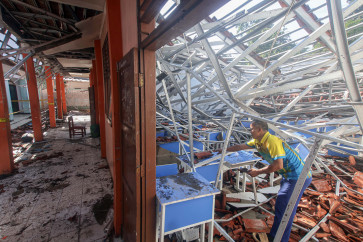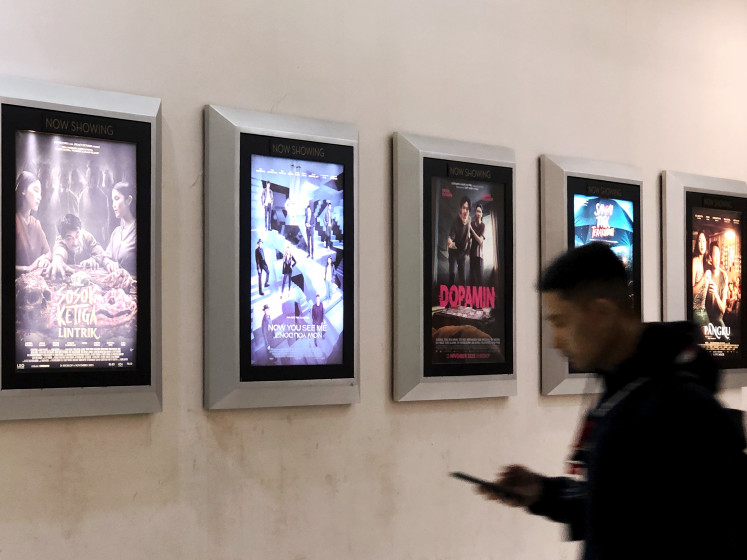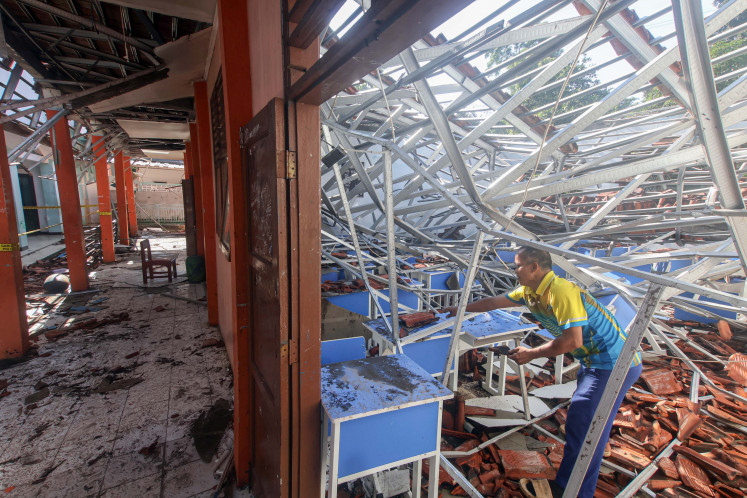Popular Reads
Top Results
Can't find what you're looking for?
View all search resultsPopular Reads
Top Results
Can't find what you're looking for?
View all search resultsAnalysis: How big is Indonesia’s middle-class today?
To answer the question, we need to agree on what defines that generic term used every day right across the world
Change text size
Gift Premium Articles
to Anyone
T
o answer the question, we need to agree on what defines that generic term used every day right across the world. One place to begin is the obvious, in any language. Quite simply, the middle rests between the top and the bottom. We can argue just about everything else, except that reality. The other factor to recognize at the outset of any such discussion is that the socioeconomic realities of a developed and affluent society are different from those of a developing third world economy.
The key indicator for economic progress is how big the middle-class has become and how rapidly it is growing. Without using any arbitrary pegs that inevitably become the focal point of such arguments, I offered a more pragmatic formula in an earlier column last year. To reiterate, most people would readily agree that household possessions represent a family’s aspirations for a better quality of life. For the purpose of defining “middle class” in a “developing economy”, I suggest the combination of a television set, a refrigerator and some form of mechanised wheels: a scooter, a motorcycle, or even a second-hand car. Anywhere in the world, that trio of possessions owned by the same household would place it above the bottom-end of that society’s socioeconomic pyramid. By that token, Indonesia is making amazing progress.
Just five years ago ending December of 2006, only 25 percent of households had the defining trio of worldly possessions. In just five years, that number has catapulted upwards to 42 percent. That transformation of millions of homes in so short a timeframe is perhaps unparalleled anywhere in the world. Five years ago, only 35 percent of the population had a refrigerator gracing the kitchen. Now that number has jumped to 50. Five years ago, 51 percent of homes had a set of wheels standing outside, either two or four. Today, 73 percent of families have at least a motorcycle, or a car. Even that everyday ‘essential’, the TV set, has moved up from 96 to 97 percent of homes. By any standard, this is a noteworthy achievement for all Indonesians, collectively.
More jobs and better wages are the legs of economic progress. The stronger these two legs become, the faster the nation runs. When more people get to buy refrigerators and entertainment systems, computers and mobile phones, cars and two-wheelers, everybody wins. Everybody, including politicians and businessmen, employers and employees, parents and children.
It’s time I addressed the killjoys. It’s true that much of the magical trio are enjoyed by all the members of many extended families living under one roof. It’s also true that some of the refrigerators are used in the “warungs” and “rumah makans” owned by the same families living upstairs. And yes, some of the motorcycles are used by the men in the families to run their “ojek” taxi businesses. But that doesn’t stop the family from enjoying the pleasures that the refrigerator, the TV set and the motorcycle brings them. Next, a second-hand car. One day, a new Kijang. It’s not just what has already been recorded that is so reassuring. Equally, it is the growing demand for electric irons and toasters, washing machines and air conditioners that augurs well for Indonesia’s march forward.
The way things are going, this country could well become the world’s No.5 economy by 2030. Lifting the bottom half of the human race out of misery has got to be the primary focus of the big developing countries. Collectively, the change they can bring can create a new world order. An Indonesian delegation led by Minister of Trade Gita Wirjawan is visiting South America next month. First stop, the regional giant and emerging global powerhouse,
Brazil. Urged by both the Brazilian ambassador and KADIN’s chairman to join the delegation, I took time out over the weekend to look at the basic facts that define these two large countries. The similarities are dazzling. So are the differences.
On the one hand, both countries have large populations over the 200 million mark, with similar demographic and socioeconomic profiles. In each region, both are the big brothers trying hard not to be seen as domineering. Both have similar challenges that face all developing countries: social inequality, inadequate infrastructure, congested cities, endemic corruption. Where Brazil is leading is in its capacity to monetize their learnings in fields as diverse as aviation, cattle, ethanol, and mining, to name just a few.
The Dalai Lama has said many a wise thing, in the most simple words. In this context, I’m reminded of his view on compassion. He said compassion is not something we feel because we want others to feel good. We feel good ourselves, being compassionate towards the less privileged, the down-trodden. It is human nature to feel good when we have done good. When more Brazilians, Russians, Indians, Chinese, Indonesians and South Africans — the people of the BRICIS countries — discover the joy of giving and not just taking, much of the world will become a better place than it is today. Together, these major powerhouses can create a new world order.
These conclusions are based on Roy Morgan Single Source, the country’s largest syndicated survey. More than 26,000 respondents are interviewed every year, week after week. The data is projected to reflect 87 percent of the population 14 years of age and over. Reports are updated every 90 days.
The writer can be contacted at debnath.guharoy@roymorgan.com










